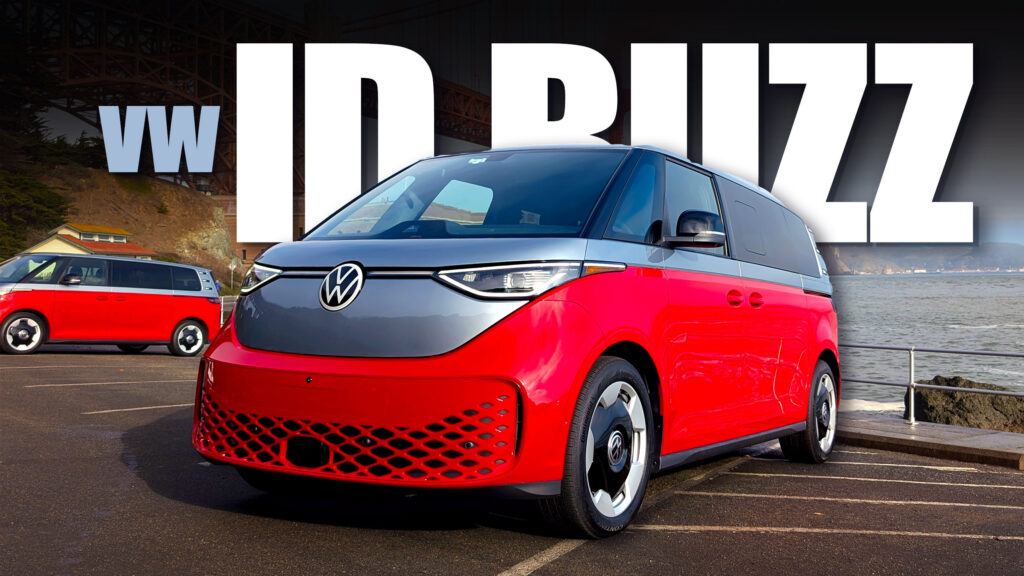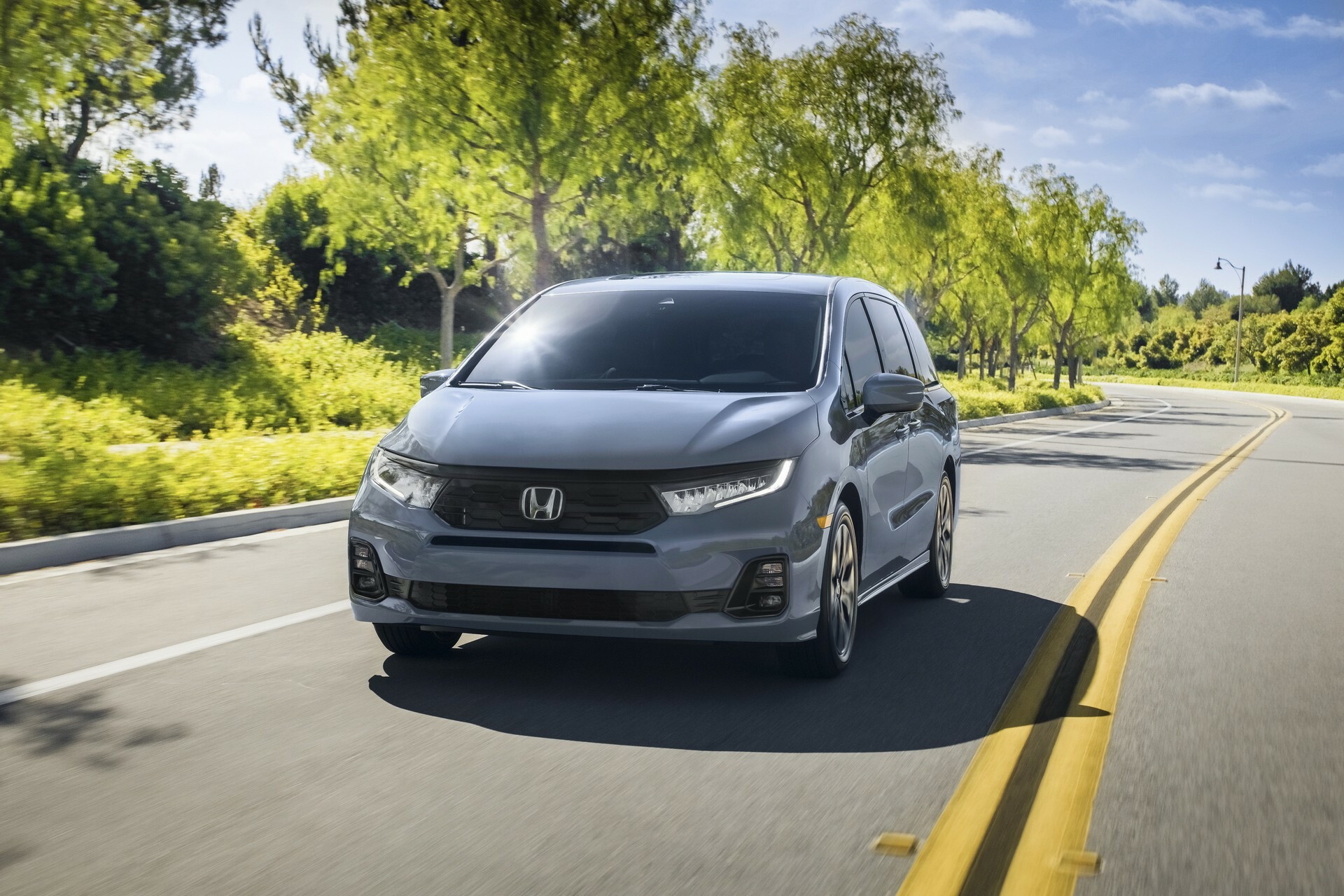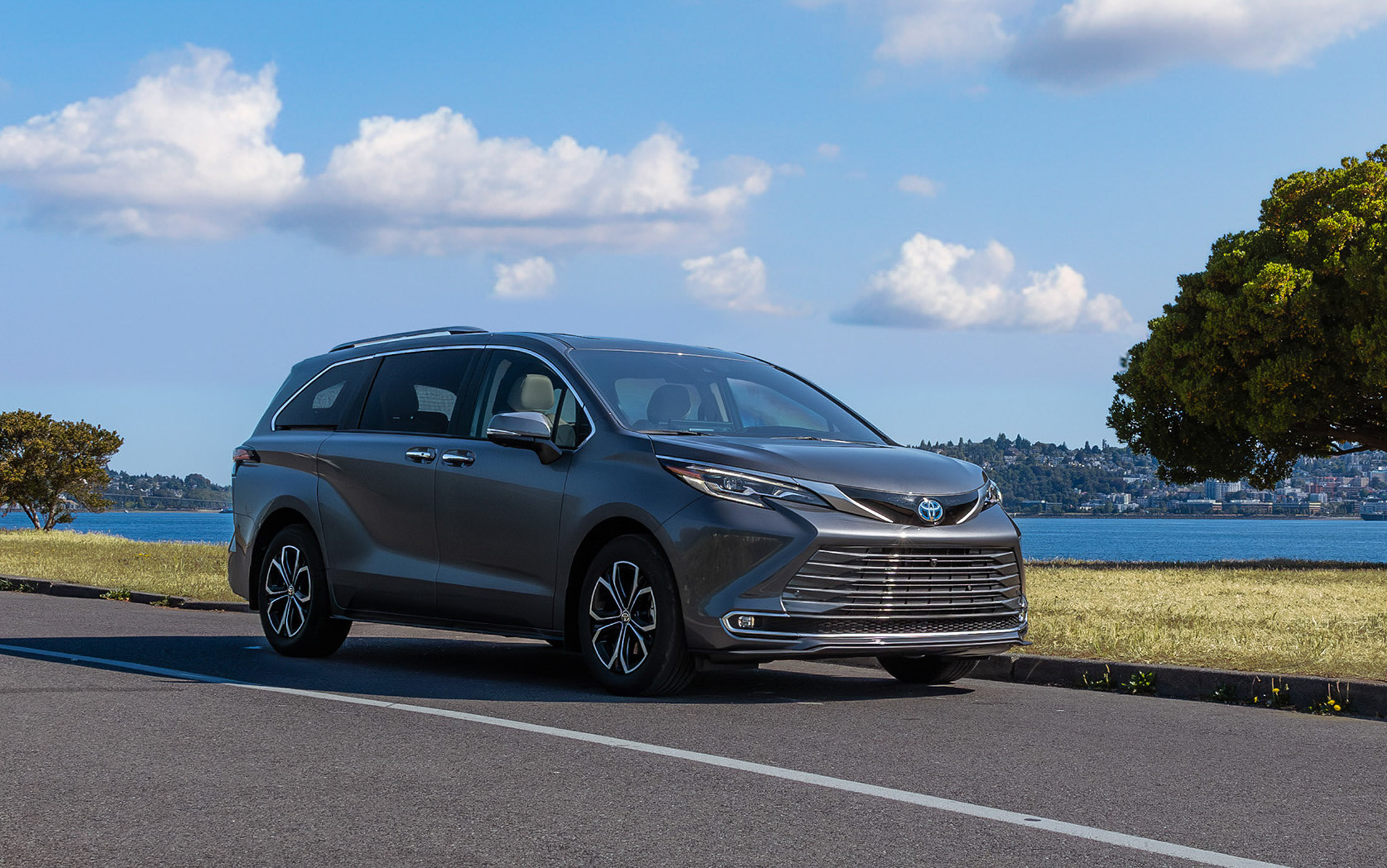Criticism of companies like Tesla that promise products only to delay or cancel them is fair and just. What’s odd, though, is that Volkswagen has teased a Type II or Bus return for over two decades without catching much flack for it. Now, in the year of our lord 2024, the ID. Buzz is about to end the long wait so many U.S. VW fans have faithfully dealt with.
In fact, it’s ending that wait with a production version that looks very similar to multiple concept versions of the recent past and has excellent interior packaging. On the other side of the coin, though, there are concerns about this Microbus revival, especially regarding its $61,545 entry price and 234-mile range.
To determine exactly what’s what, we traveled to San Francisco to pilot what Volkswagen hopes will be another counterculture icon. We drove it places where few ID. Buzz owners will go, we used it on the highway and even took it down Lombard Street. What we learned is that this is a vehicle that stands out but, as with most striking things these days, the cost for that novelty is high.
QUICK FACTS
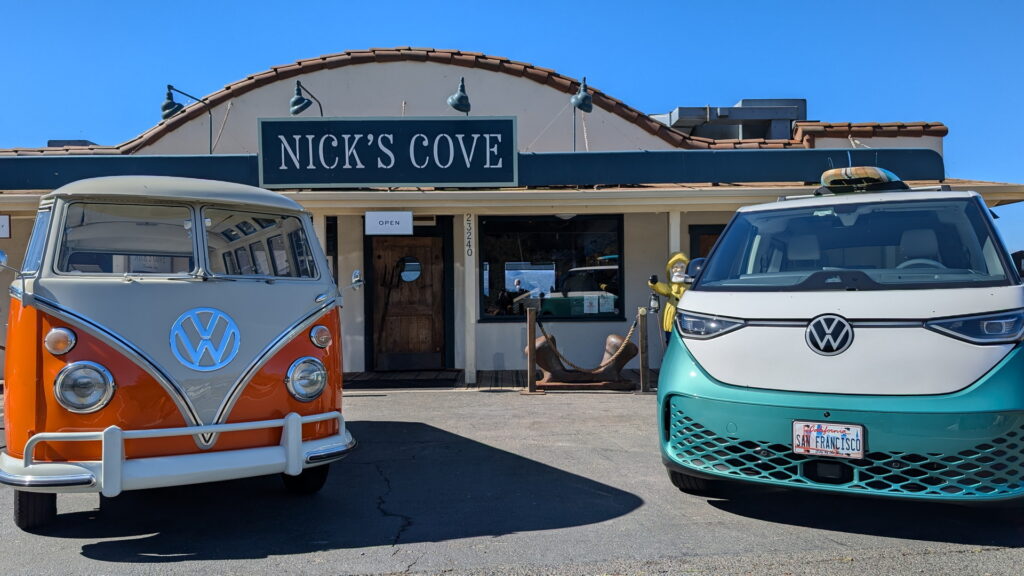
On paper, the drivetrain of the ID. Buzz is a mixed bag. Every U.S.-bound version features a 91 kWh battery pack and can charge at up to 200 kW. For reference, that could, given the right charger, fill the battery from 10 percent to 80 percent in 26 minutes. Volkswagen will sell two versions starting with the RWD model that makes 282 horsepower (210 kW) and offers 234 miles (377 km) of range. For a full trim breakdown see our coverage here.
An AWD version is also available with 230 miles of range but 335 horsepower (249 kW) to show for it. Those figures are a bit strange considering the relatively large battery pack size and the relatively low range estimate. For example, the Kia EV9 base model manages 231 miles (372 km) of estimated range with only a 76.1 kWh battery pack. The Rivian R1S features a 92.5 kWh battery and offers standard AWD and 270 miles of range, albeit for around $13,000 more than the ID. Buzz after tax incentives.
Clever Packaging
However, the ID. Buzz might be the most efficiently packaged vehicle on sale today. Despite taking up less space from front to back than a Chrysler Pacifica, this minivan offers more total interior volume, more second-row headroom, and more third-row legroom. Oh, and it can pull that same trick on just about everything a potential buyer might cross-shop with it.
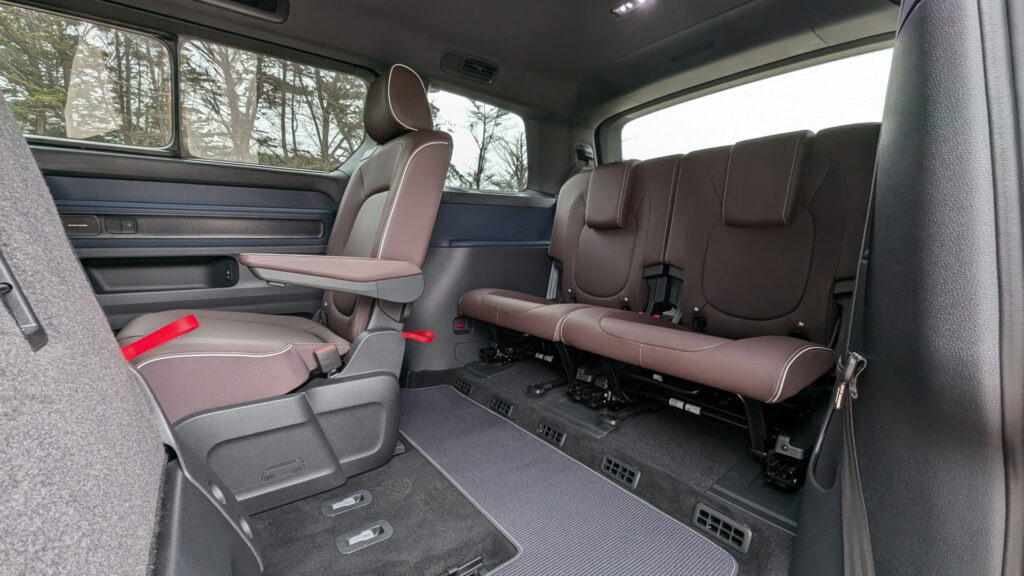
Third-row passengers have nine more inches of legroom than they’ll get in a Rivian R1S and 10 more inches than in a Kia EV9. Keep in mind too that both the Kia and Rivian are longer than the Volkswagen. I’m 6’6 and had boast-worthy amounts of legroom in the third row with the first and second rows set to where I would put them if I were sitting in them.
Third-row headroom is maybe the only thing missing from this vehicle and it’s not even worth complaining about in my opinion. Frankly, if other automakers aren’t trying to copy the packaging in the ID. Buzz, they’re truly missing the boat. It’s worth noting here too that this thing draws crowds quickly. Here’s a group of teenagers excited to see it at a local fishing spot.
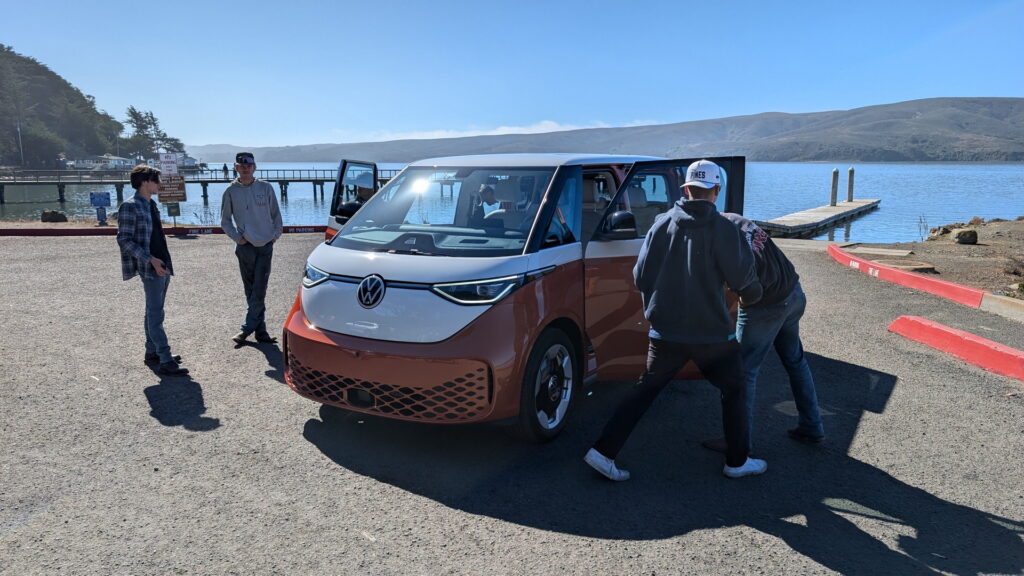
Interior Quality
Beyond the packaging though this Volkswagen doesn’t feel as special as its exterior might have you believe. We tested both the RWD Pro S Plus and the Pro S Plus 4Motion and each suffered from a bevy of cheap-feeling plastic surfaces throughout. In most minivans, I’d say who cares, because kids are going to get in here and wreak havoc. In a vehicle that starts at $61,545 after destination, one that Volkswagen openly considers its new flagship, that seems like a huge letdown.
For example, the vast majority of the door cards, including the upper-most sections are cheap unattractive plastic. That goes for most of the dash too including a section that sort of looks like faux wood but doesn’t feel like anything other than a cheap decal.
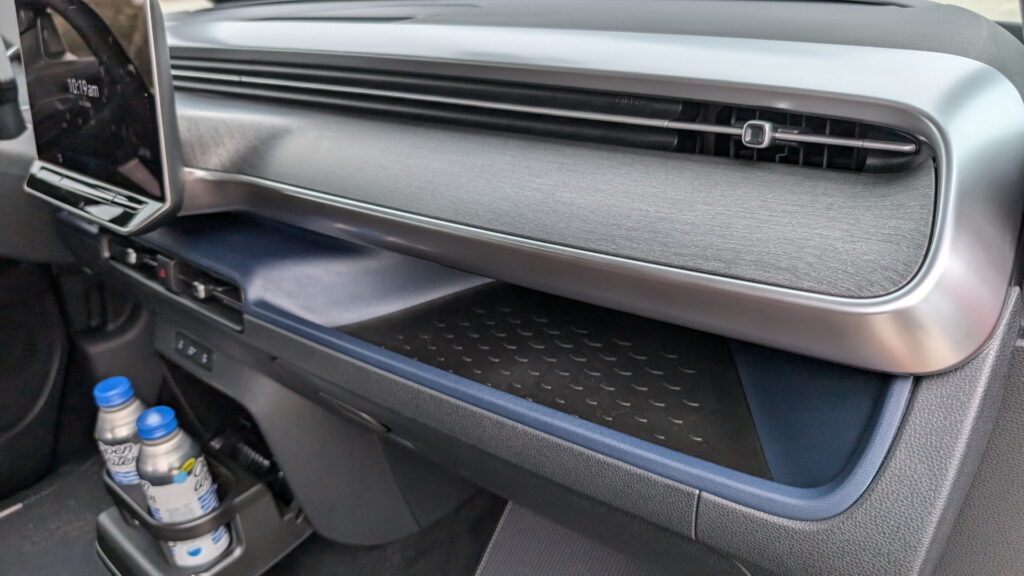
In addition, for whatever reason, Volkswagen is still using a window control panel that requires one to select the front or rear windows before using the switches. Is it really that expensive or difficult to just put four separate window switches into the same space?
Infotainment System
The infotainment system is a mixed bag too. Those who have used any late-model VW user interface will be happy to hear that this one is much faster than the ones found in some other offerings from this brand. In addition, most of the menus are easy to navigate and understand. VW also included a great LED light feature mid-way up the dash that travels left or right to indicate navigation directions. It’s a really intuitive use of light and sincerely helpful on the road.
At the same time, some features seem unfinished. For example, the system will allow you to reset tire pressure but if there is a place where it shows what the tire pressure is.
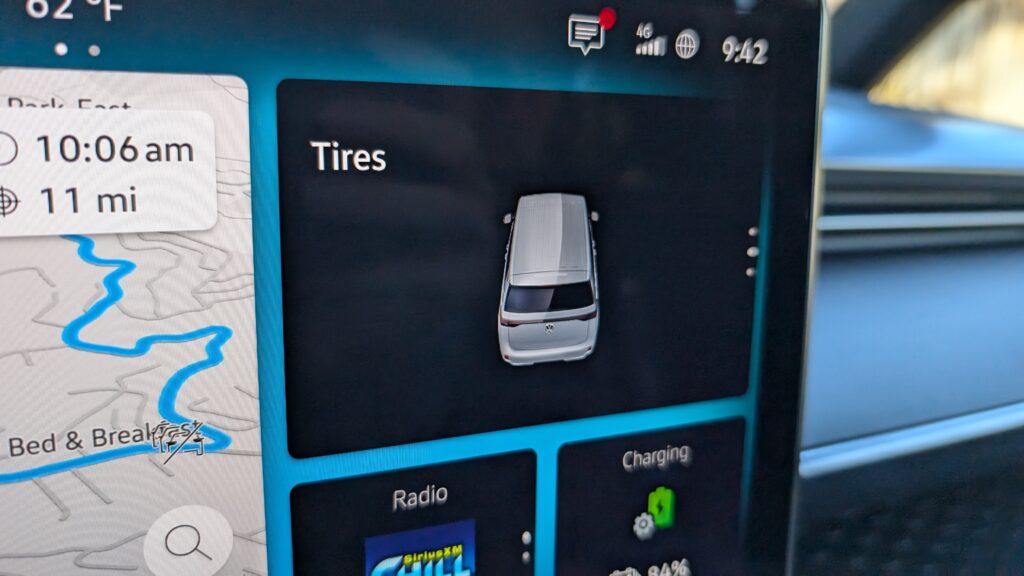
On top of that, VW still insists on using capacitive sliders rather than real buttons, switches, and knobs for important functions like climate control and volume control. At least now there’s a jutted out section that allows one to sort-of grasp the screen to stead a hand while using these frustrating controls. Then there’s the driver information cluster which actually looks pretty good. It’s intuitive too but for a vehicle in this price range, it feels underwhelming and objectively pretty small.
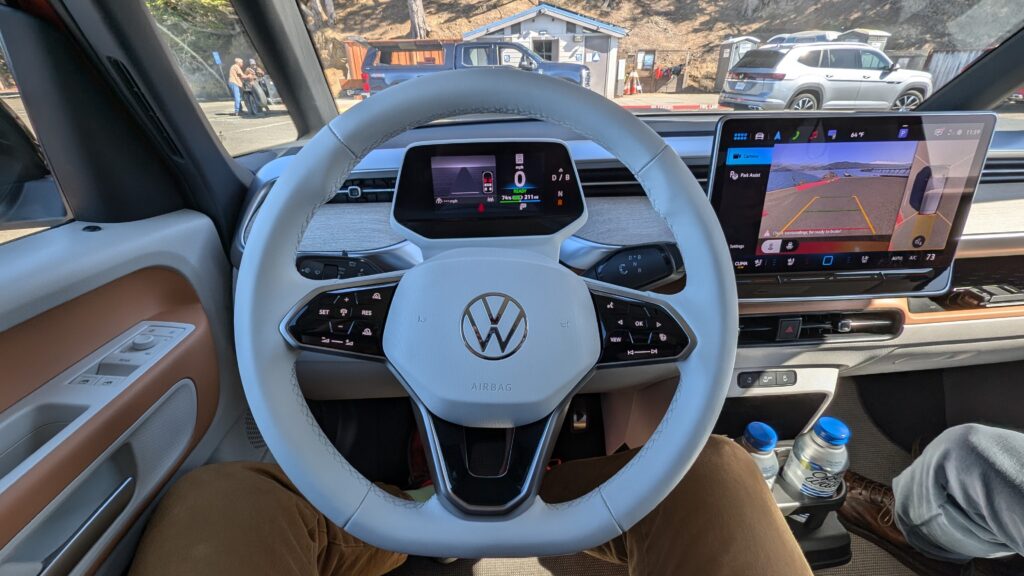
On the plus side, the seating itself is very comfortable and both Pro S Plus models we drove offered a lumbar massage function in the front row. The second-row seats get heat and climate controls near the roof on each side. As a point of clarification, the ID. Buzz comes with three climate zones, not four, so while there are two controls for climate in the second row they are always synced. What one person does will reflect on the other screen and vice versa. Surely this won’t spark sibling hijinks as kids fight over the temperature or fan speed.
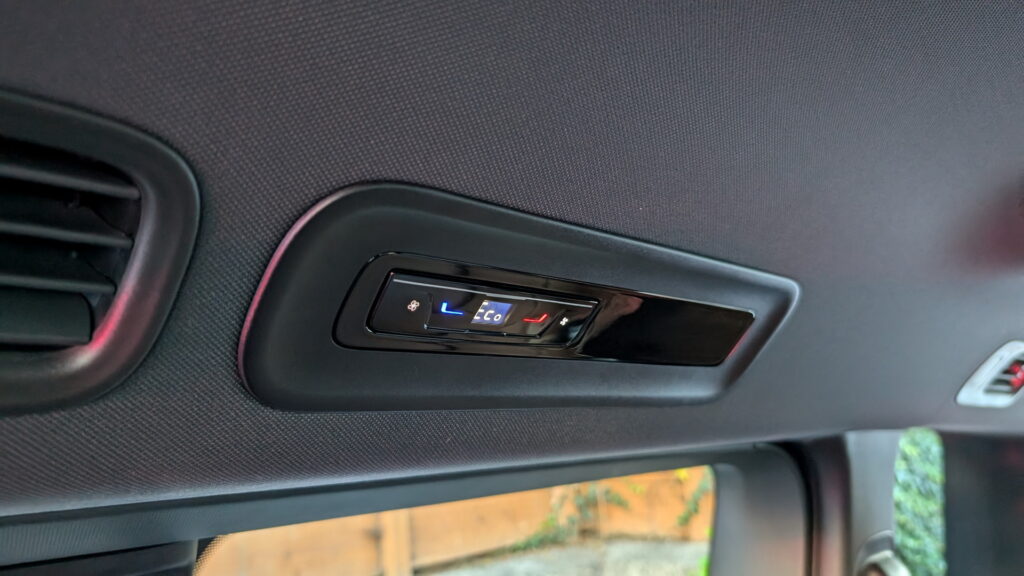
Interestingly, the ID. Buzz doesn’t have very many conventional cupholders. There is a pair for the driver and front passenger and then the rest are somewhat square. The second row doesn’t actually have any dedicated cupholders. Beyond that slight inconvenience, the rest of the storage situation in this Volkswagen is impressive. Each front door card features a trio of storage spaces, there is an inductive charging slot for the driver’s phone just to the right of the steering wheel. The front passenger has their own parcel shelf.
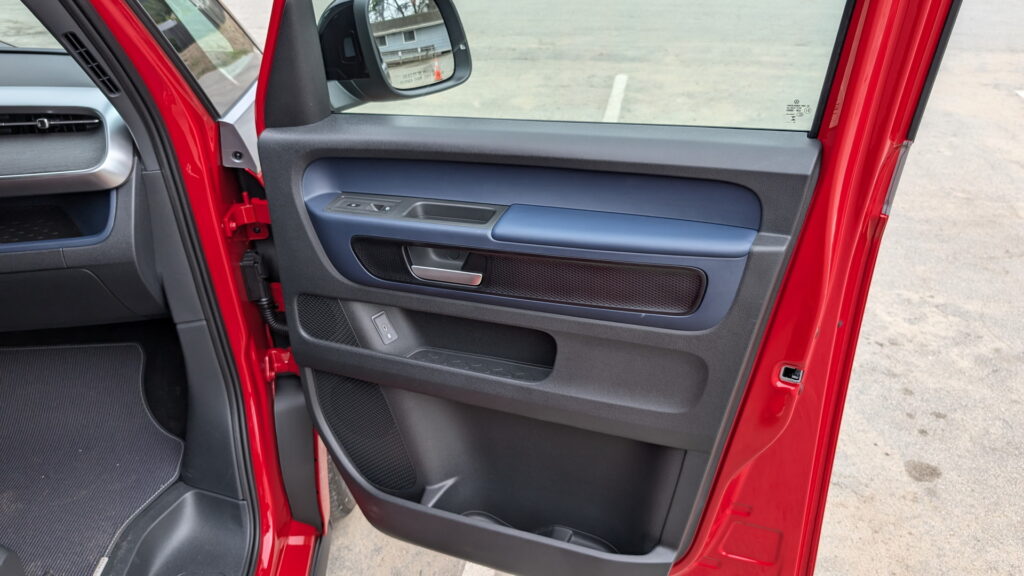
Second-row passengers each get a large cubby space with a window control and USB charging ports in the door. They also have access to a pair of pockets on the backs of the front seats. Volkswagen also includes a cool modular storage bin that offers a flip-out cubby on one end and a slide-out drawer on the other.
The top of it provides another place where one might sit a drink but even then it would be a bit awkward as the dividers aren’t round. What they are instead is useful. Each pops out to reveal a special use. One is a bottle opener and the other is an ice scraper. A latch system in the floor allows owners to move that bin forward to the front seats, back to the middle row, or even further back for third-row access.
Speaking of the third row, the leftmost passenger gets a pair of dedicated cupholders while the rightmost gets just one. Each outboard passenger benefits from a storage cubby and USB-C charging ports. Behind the third row, the storage wonders continue.
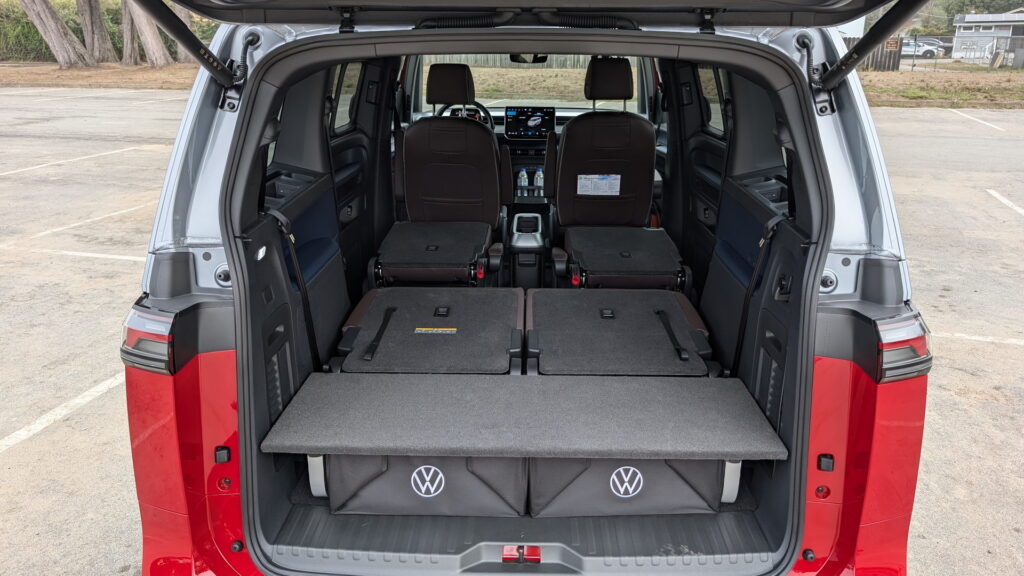
Volkswagen included storage bins and a parcel shelf in each of the test vehicles. In total, buyers will have a little less than 11 cubic feet to play with back there if the third row is in place. What makes the Buzz special though is that the third row folds down flat with the parcel shelf (around a foot off of the floor) and is completely removable in just a few minutes. The second row isn’t easily removable but I’m willing to bet that with a few tools, it wouldn’t be too tough to rip out.
In summation let me again say that the cabin is so well laid out that I hope other automakers follow suit. I also hope Volkswagen finds a way to improve the issues that diminish the spacious experience.
Drive Impressions
Perhaps nothing about the Volkswagen ID. Buzz will impress a person more than the way it drives. Remember that the RWD version makes 282 horsepower which is right in line with the top performers in the minivan segment. What the VW has on all of its rivals though is an all-electric platform and that one feature means that it feels genuinely quick. Volkswagen claims that the RWD version will go from 0-60 mph in “about seven seconds,” a claim that’s totally believable after spending time behind its wheel.
Jumping on the highway and getting up to speed felt far easier than in any of the competition. What’s maybe more interesting is how sharply the Buzz handles. The entire first hour or more of driving in this car was on California’s Shore Highway 1. It’s full of curves that would remind most of roads like Tail of the Dragon. In other words, a Golf R would be perfectly suited to a road like this. Somehow, the ID. Buzz didn’t feel out of its element.
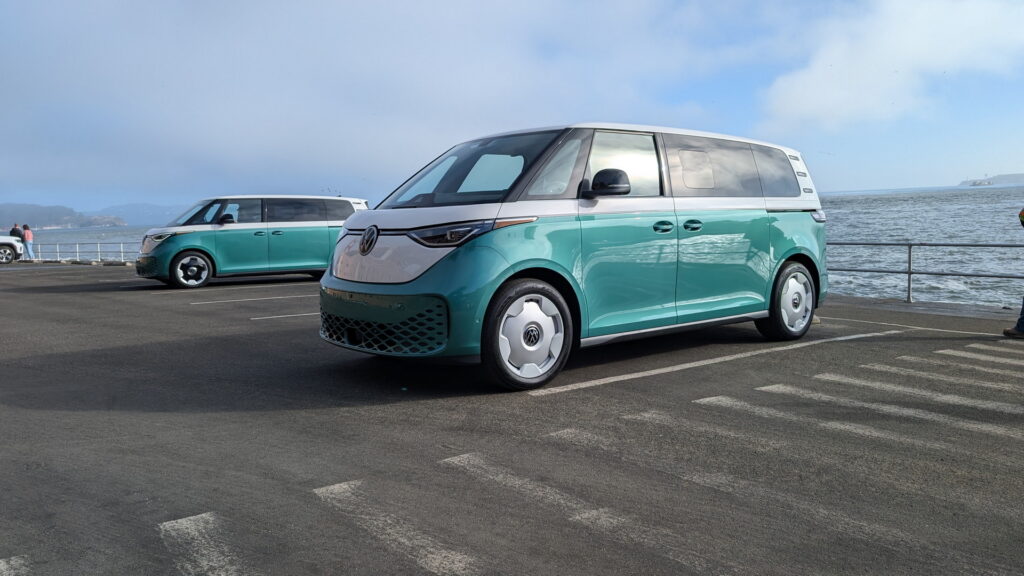
This minivan doesn’t pitch and roll the way one would expect. It’s sharp, easy to place, offers great steering feedback, great braking feedback, and honestly has more power than it needs. That’s especially true of the 335 horsepower AWD model which is almost comically quick out of the corners.
On the downside, that sharpness ends up adding a bit of harshness to the ride quality that I didn’t expect either. Front-seat passengers don’t pick it up as readily but several individuals at this drive event reported the feeling of car sickness riding in the ID. Buzz after the drive. Keep in mind that these are the types of folks who spend countless hours in cars; they’re used to getting shuttled around without getting sick. On the freeway, that tendency to send impacts into the seats is diminished but not gone entirely.
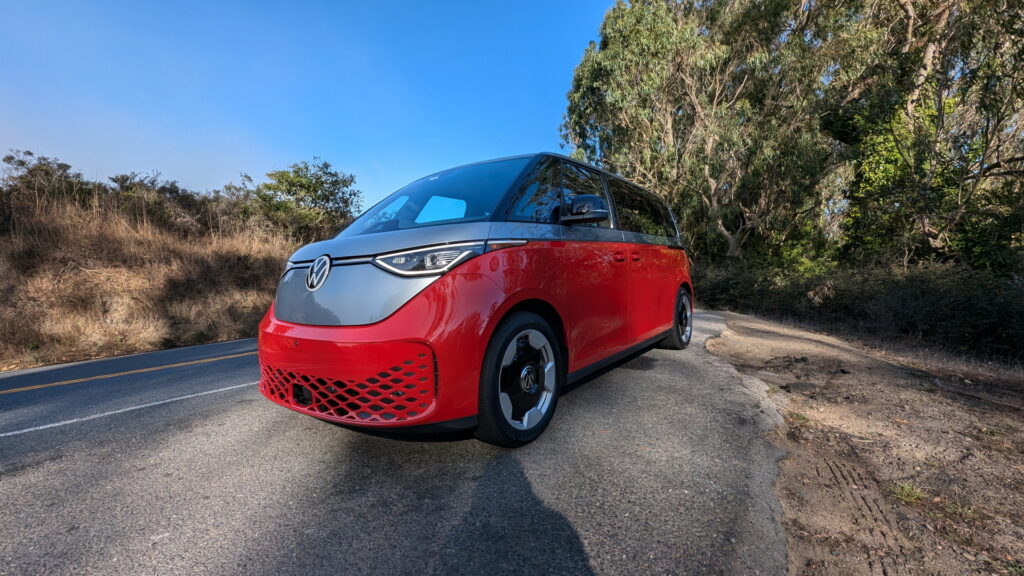
The tradeoffs continue though because the Buzz is probably the easiest modern three-row vehicle to drive in traffic. A tall driving position and the expansive windows make it incredibly easy to place this van whether that’s in narrow city streets or in tight parking spaces. Frankly, the ID. Buzz feels like a stellar city van for those who routinely transport lots of people or things.
In terms of range, I’m happy to report that the ID. Buzz met or beat VW’s claims. In a mix of driving the least efficient reading we measured was 2.6 miles per kWh. That equates to about 230 miles of range. The RWD model actually hit 3 miles per kWh which is around 273 miles. Now, it’s important to note that results will vary, based on several factors but these figures are encouraging. At the same time, this certainly won’t be the road-tripping vehicle that the original was. Unless, of course, you happen to be the type of road tripper that doesn’t mind stopping for quite a while every 200 miles or so during your trip.
A Segment Of One
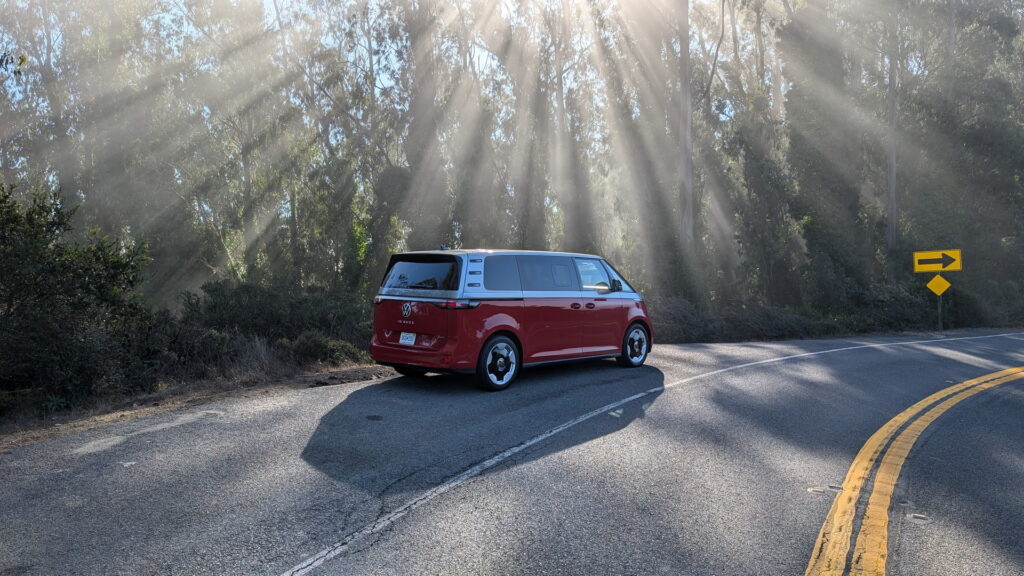
As of this writing, the ID. Buzz has its own space in the American car market. No other automaker sells a direct competitor, for now, that is. Kia is working on a rival called the PV5. Since details are sparse on when it’ll arrive, and what sort of battery, range, and price it’ll have let’s consider some cars that buyers might cross-shop with the ID. Buzz for now.
First, the Kia EV9, already mentioned a few times might be the most direct competitor for now. It offers three-row seating, a significantly lower base price ($56,395), and an all-electric drivetrain. While the base model only provides 215 horsepower, it matches the ID. Buzz 4Motion in terms of range, 230 miles. Kia also offers a long-range version with 201 horsepower and 304 miles of range for $60,695.
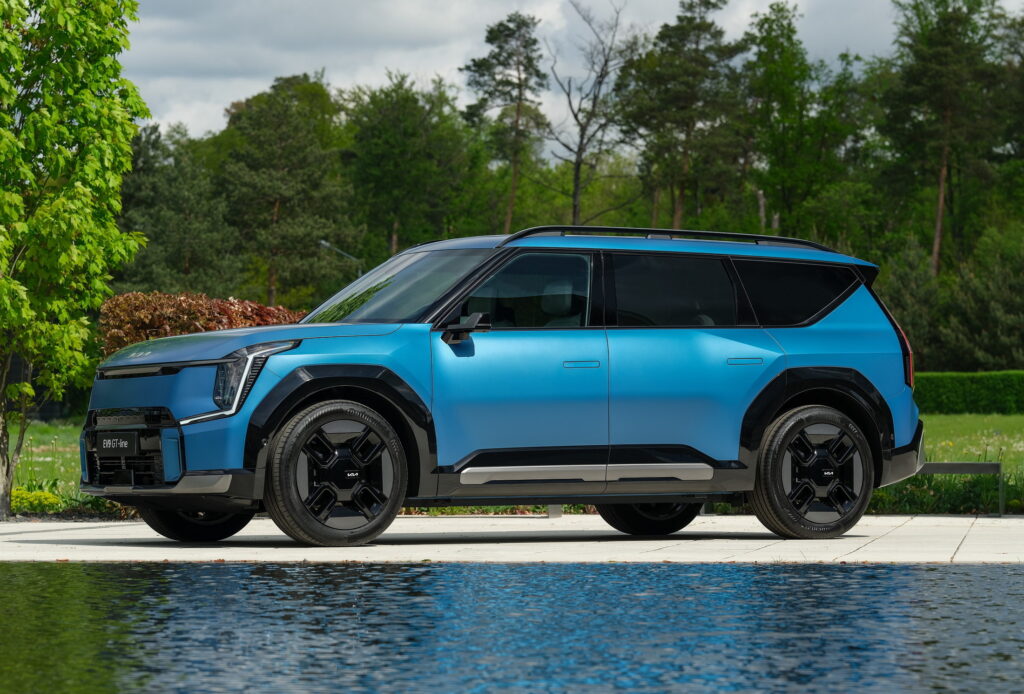
For $65,395, one can get a mid-trimmed EV9 with 280 miles of range and 379 horsepower. Those numbers make the ID. Buzz looks less enticing though it’s worth noting that the Volkswagen benefits from far better interior packaging. At the same time, the cabin in the Kia feels more premium.
Up against the four minivan brands in America, the ID. Buzz clearly has the lead when it comes to styling and interior space. Each of those potential rivals offers its own unique take on the segment and is worthy of consideration.
That’s even more true since they’re all less expensive than the ID. Buzz, often by 10 percent or more of the VW’s base price. In addition, it’s worth noting that they’ll offer a far longer overall range between required stops for refueling.
Interestingly, Volkswagen also called out the Rivian R1S as a potential competitor during our time in California. The R1S is a three-row all-electric SUV but it has a starting price of $75,900 which is considerably more pricey than the VW. Importantly, though, the R1S is eligible for a $3,500 federal tax credit and that says nothing about state or energy company credits one might be eligible for. Again, as is going to be the case against just about anything, the ID. Buzz offers better interior space for people than the R1S.
Beyond that, the R1S looks like a clear winner, especially for those willing to pay anywhere near $70,000 for either vehicle. Not only does the tax incentive reduce the price for the Rivian, but buyers won’t have to worry about dealer markups. The specs for each vehicle back up the added value of the R1S too. It offers 258 miles of range, AWD, and 533 horsepower.
Final Thoughts
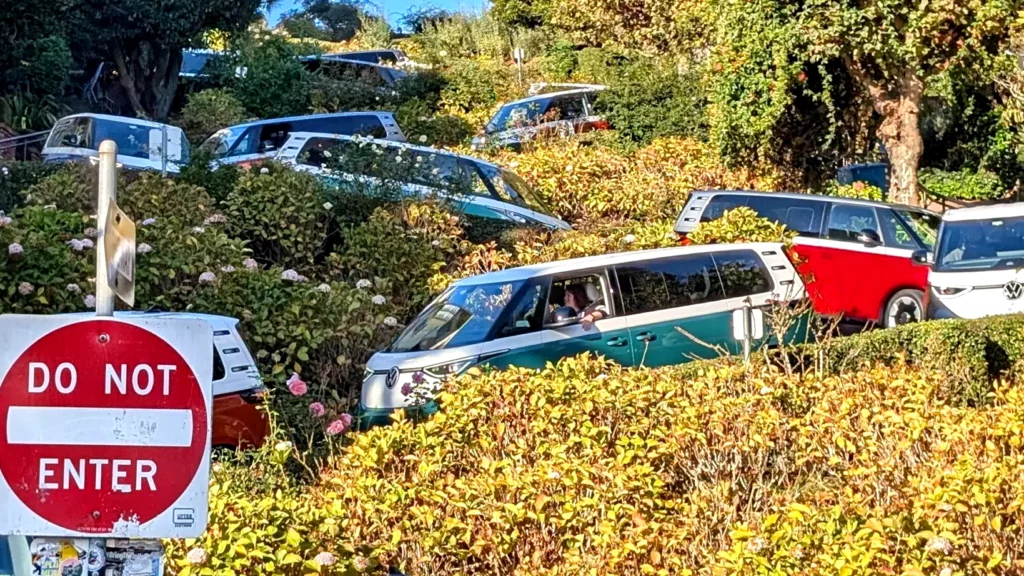
In the end, the Volkswagen ID. Buzz feels like a missed opportunity wrapped in nostalgia. It captures the charm and style of the original Type II, but it comes at a steep price—literally.
The original Bus was a cultural phenomenon not because it was fast or luxurious, but because it was affordable. VW dealers even say that themselves. In the ’60s, you could snag one for under $3,000—about $25,000 today. Imagine if Volkswagen could have launched the ID. Buzz at a comparable price. Modern safety, comfort features, and electrification understandably drive up costs, but three times that inflation-adjusted figure? That’s a tough pill to swallow.
Volkswagen claims there’s no “base model” for the ID. Buzz, but that’s exactly what it needs. With unnecessary luxury features and tech crammed in, it’s priced out of reach for many who would have been drawn to its quirky appeal. Could VW have stripped it down to a simpler, more accessible version at, say, $45,000? Probably. Would that have attracted the wider audience that made the original Bus a cultural icon? Absolutely.
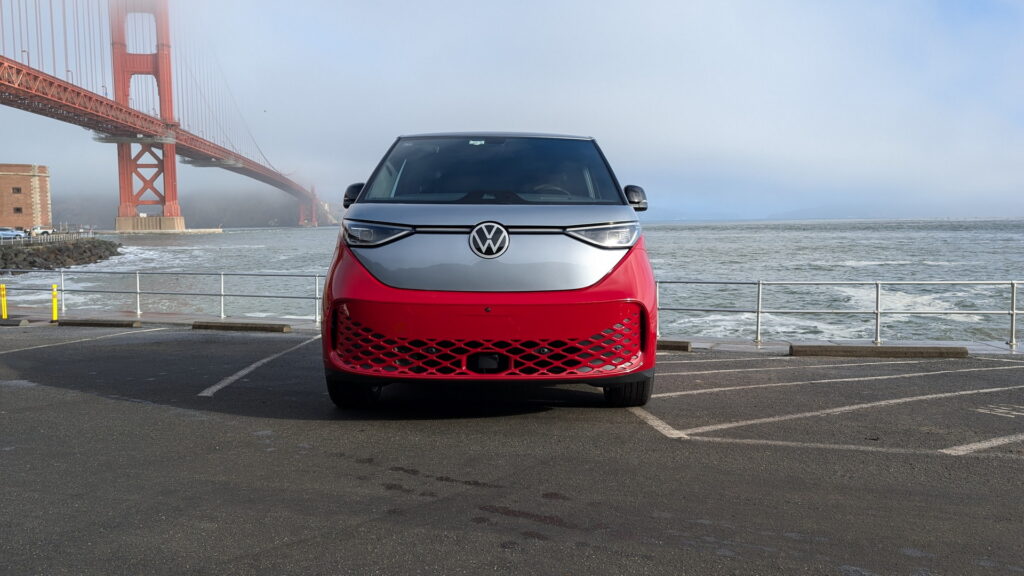
To be fair, Volkswagen isn’t aiming for the same demographic as the original. The ID. Buzz is clearly pitched to well-heeled buyers more interested in EV status, trendy retro styling, and tech features than the freewheeling, counterculture spirit of the past. It’s no longer a people’s car but a niche luxury item. In that sense, it achieves what it set out to do—appeal to a new wave of eco-conscious, affluent consumers who care more about style than genuine counterculture substance.
So, what do they get for their $60k+? A practical and spacious minivan with decent power, no doubt. The ID. Buzz impresses with its clever packaging and roomy interior. It offers more legroom and cargo space than larger rivals like the Kia EV9 and Rivian R1S, despite being shorter. Thoughtful touches like the modular storage show VW thought about how people would actually use the space. Plus, its surprisingly sharp handling—especially on twisty roads—makes the Buzz more fun to drive than you’d expect from something this size.
But it comes with trade-offs. The sub-240-mile range is disappointing for an EV in this price bracket, the interior plastics feel cheap, and the infotainment system still struggles with usability. For a minivan at this cost, these compromises are hard to ignore.
Ultimately, the ID. Buzz feels like a missed opportunity. For those willing to shell out the cash, it’s a head-turning, super-practical EV with nostalgia baked into every curve. It’s sharp to drive and undeniably cool too. But for the masses that VW once captured with the original Bus, the ID. Buzz feels like an unattainable dream—proof that, somewhere along the way, Volkswagen traded its soul for a higher price tag.



